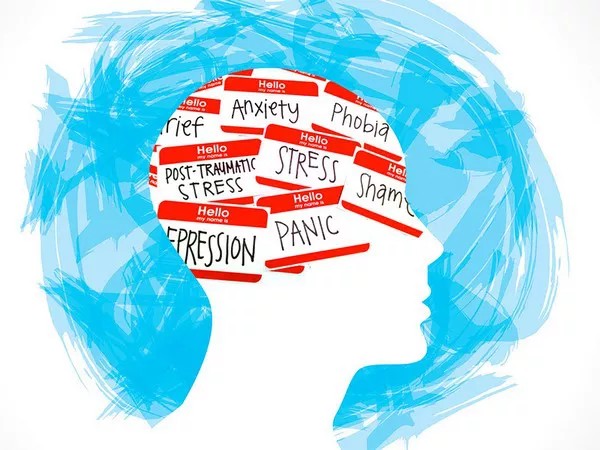Agoraphobia, often misunderstood and underestimated, is a complex anxiety disorder that affects millions of people worldwide. In this comprehensive guide, we will delve into every aspect of agoraphobia, shedding light on its symptoms, causes, diagnosis, and treatment options. By the end of this article, you’ll have a thorough understanding of this condition, which can be a lifeline for those living with it.
Symptoms of Agoraphobia:
Agoraphobia is characterized by a myriad of distressing symptoms that can severely impact an individual’s quality of life. These symptoms can manifest in various ways, including:
Intense Fear of Public Places: People with agoraphobia often experience overwhelming fear when exposed to public spaces or crowded areas. This fear can lead to panic attacks and a desperate need to escape the situation.
Avoidance Behavior: Individuals may go to great lengths to avoid situations they perceive as triggering, such as avoiding social gatherings, public transportation, or even leaving their homes altogether.
Physical Symptoms: Agoraphobia can trigger physical symptoms like rapid heart rate, sweating, trembling, and shortness of breath, further intensifying the anxiety associated with the disorder.
Dependency on a Safe Zone: Many individuals with agoraphobia establish a “safe zone,” typically their home, where they feel secure. Venturing beyond this zone can be incredibly challenging.
Isolation: Over time, agoraphobia can lead to social isolation, as individuals withdraw from social interactions and outside activities.
Causes of Agoraphobia:
Understanding the root causes of agoraphobia is essential for effective treatment. While the precise cause may vary from person to person, some common factors include:
Genetics: Research suggests that genetics play a role in predisposing individuals to anxiety disorders, including agoraphobia. If you have a family history of anxiety disorders, you may be at a higher risk.
Trauma: Traumatic events, such as accidents, abuse, or sudden loss, can trigger agoraphobia in susceptible individuals. The fear of a recurrence of traumatic events often leads to avoidance behavior.
Stressful Life Events: Chronic stress or a series of stressful life events can contribute to the development of agoraphobia. High-stress levels can exacerbate anxiety symptoms.
Neurochemical Imbalance: Imbalances in neurotransmitters like serotonin and norepinephrine have been linked to anxiety disorders. These imbalances can increase vulnerability to agoraphobia.
Personality Factors: Certain personality traits, such as high levels of neuroticism or perfectionism, may increase the likelihood of developing agoraphobia.
Diagnosis and Evaluation:
Diagnosing agoraphobia involves a thorough assessment by a qualified mental health professional. The diagnostic process may include:
Clinical Interviews: A mental health expert will conduct interviews to understand the individual’s symptoms, triggers, and medical history.
Psychological Assessment: Standardized psychological tests and questionnaires may be used to evaluate the severity of agoraphobia and assess comorbid conditions.
Physical Examination: A physical examination can rule out any underlying medical conditions that might be contributing to the symptoms.
Differential Diagnosis: It’s essential to differentiate agoraphobia from other anxiety disorders, as well as medical conditions with similar symptoms.
Duration and Severity Assessment: The clinician will assess the duration and severity of symptoms to make an accurate diagnosis.
Treatment Options for Agoraphobia:
The good news is that agoraphobia is treatable, and several effective treatment options are available:
Cognitive-Behavioral Therapy (CBT): CBT is a cornerstone in treating agoraphobia. It helps individuals identify and challenge negative thought patterns and gradually confront their fears in a controlled manner.
Exposure Therapy: This form of therapy involves gradual exposure to feared situations, helping individuals build tolerance and reduce anxiety.
Medications: In some cases, medication may be prescribed to alleviate symptoms. Antidepressants and anti-anxiety medications can be effective, but they should be used in conjunction with therapy.
Support Groups: Joining support groups or therapy groups for individuals with agoraphobia can provide a sense of community and shared understanding.
Lifestyle Changes: Practicing stress-reduction techniques, maintaining a healthy lifestyle, and incorporating relaxation exercises can complement other treatments.
Conclusion:
Agoraphobia is a challenging condition, but with the right support and treatment, individuals can regain control of their lives. If you or someone you know is struggling with agoraphobia, seeking help from a qualified mental health professional is the first step towards recovery. Remember, you are not alone, and there is hope for a brighter, anxiety-free future.
In this article, we’ve explored the symptoms, causes, diagnosis, and treatment options for agoraphobia. Armed with this knowledge, individuals and their loved ones can take proactive steps towards managing and overcoming this often-debilitating condition.
By providing credible information and insight into agoraphobia, we hope to contribute to a better understanding of this anxiety disorder and ultimately help those affected lead happier, more fulfilling lives.

